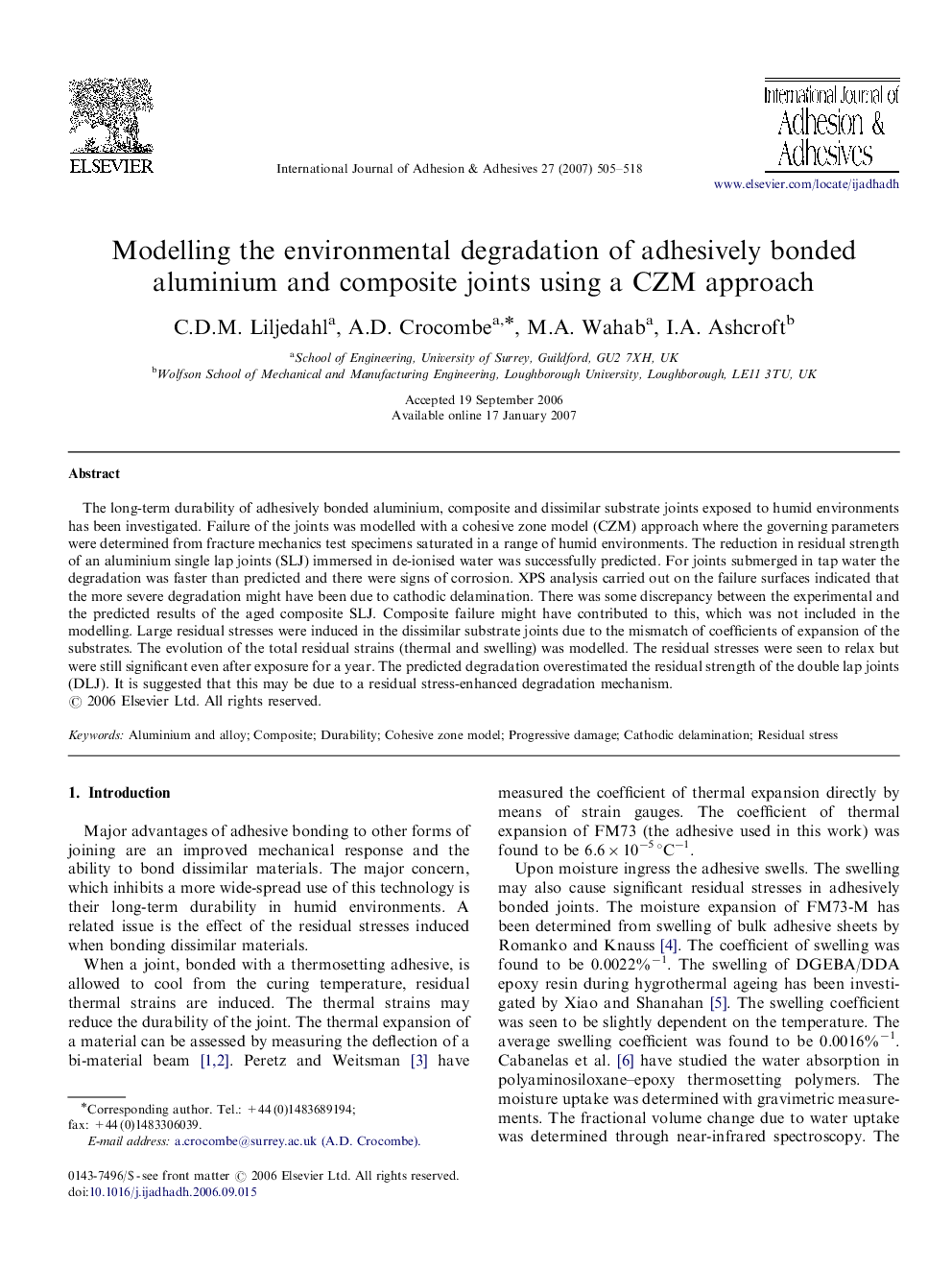| کد مقاله | کد نشریه | سال انتشار | مقاله انگلیسی | نسخه تمام متن |
|---|---|---|---|---|
| 780158 | 1463538 | 2007 | 14 صفحه PDF | دانلود رایگان |

The long-term durability of adhesively bonded aluminium, composite and dissimilar substrate joints exposed to humid environments has been investigated. Failure of the joints was modelled with a cohesive zone model (CZM) approach where the governing parameters were determined from fracture mechanics test specimens saturated in a range of humid environments. The reduction in residual strength of an aluminium single lap joints (SLJ) immersed in de-ionised water was successfully predicted. For joints submerged in tap water the degradation was faster than predicted and there were signs of corrosion. XPS analysis carried out on the failure surfaces indicated that the more severe degradation might have been due to cathodic delamination. There was some discrepancy between the experimental and the predicted results of the aged composite SLJ. Composite failure might have contributed to this, which was not included in the modelling. Large residual stresses were induced in the dissimilar substrate joints due to the mismatch of coefficients of expansion of the substrates. The evolution of the total residual strains (thermal and swelling) was modelled. The residual stresses were seen to relax but were still significant even after exposure for a year. The predicted degradation overestimated the residual strength of the double lap joints (DLJ). It is suggested that this may be due to a residual stress-enhanced degradation mechanism.
Journal: International Journal of Adhesion and Adhesives - Volume 27, Issue 6, September 2007, Pages 505–518